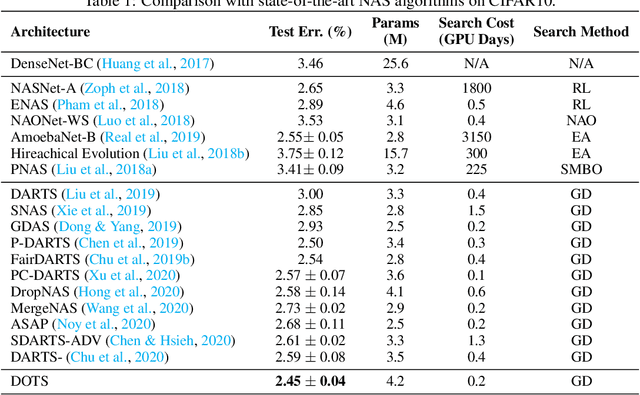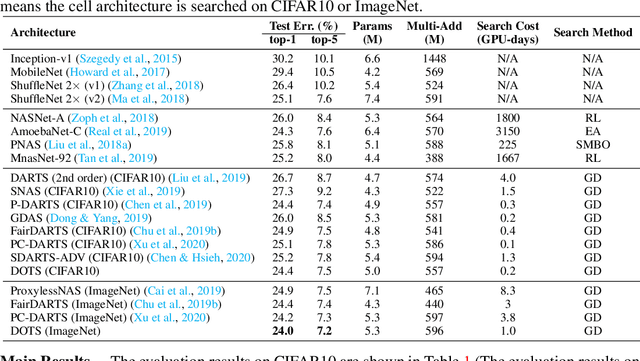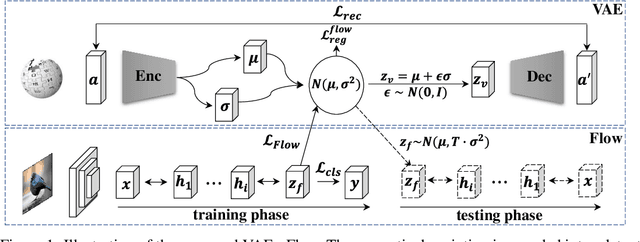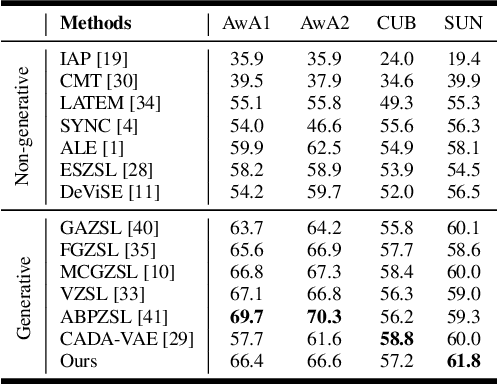Yu-Chao Gu
DOTS: Decoupling Operation and Topology in Differentiable Architecture Search
Oct 02, 2020



Abstract:Differentiable Architecture Search (DARTS) has attracted extensive attention due to its efficiency in searching for cell structures. However, DARTS mainly focuses on the operation search, leaving the cell topology implicitly depending on the searched operation weights. Hence, a problem is raised: can cell topology be well represented by the operation weights? The answer is negative because we observe that the operation weights fail to indicate the performance of cell topology. In this paper, we propose to Decouple the Operation and Topology Search (DOTS), which decouples the cell topology representation from the operation weights to make an explicit topology search. DOTS is achieved by defining an additional cell topology search space besides the original operation search space. Within the DOTS framework, we propose group annealing operation search and edge annealing topology search to bridge the optimization gap between the searched over-parameterized network and the derived child network. DOTS is efficient and only costs 0.2 and 1 GPU-day to search the state-of-the-art cell architectures on CIFAR and ImageNet, respectively. By further searching for the topology of DARTS' searched cell, we can improve DARTS' performance significantly. The code will be publicly available.
Generalized Zero-Shot Learning via VAE-Conditioned Generative Flow
Sep 01, 2020



Abstract:Generalized zero-shot learning (GZSL) aims to recognize both seen and unseen classes by transferring knowledge from semantic descriptions to visual representations. Recent generative methods formulate GZSL as a missing data problem, which mainly adopts GANs or VAEs to generate visual features for unseen classes. However, GANs often suffer from instability, and VAEs can only optimize the lower bound on the log-likelihood of observed data. To overcome the above limitations, we resort to generative flows, a family of generative models with the advantage of accurate likelihood estimation. More specifically, we propose a conditional version of generative flows for GZSL, i.e., VAE-Conditioned Generative Flow (VAE-cFlow). By using VAE, the semantic descriptions are firstly encoded into tractable latent distributions, conditioned on that the generative flow optimizes the exact log-likelihood of the observed visual features. We ensure the conditional latent distribution to be both semantic meaningful and inter-class discriminative by i) adopting the VAE reconstruction objective, ii) releasing the zero-mean constraint in VAE posterior regularization, and iii) adding a classification regularization on the latent variables. Our method achieves state-of-the-art GZSL results on five well-known benchmark datasets, especially for the significant improvement in the large-scale setting. Code is released at https://github.com/guyuchao/VAE-cFlow-ZSL.
 Add to Chrome
Add to Chrome Add to Firefox
Add to Firefox Add to Edge
Add to Edge